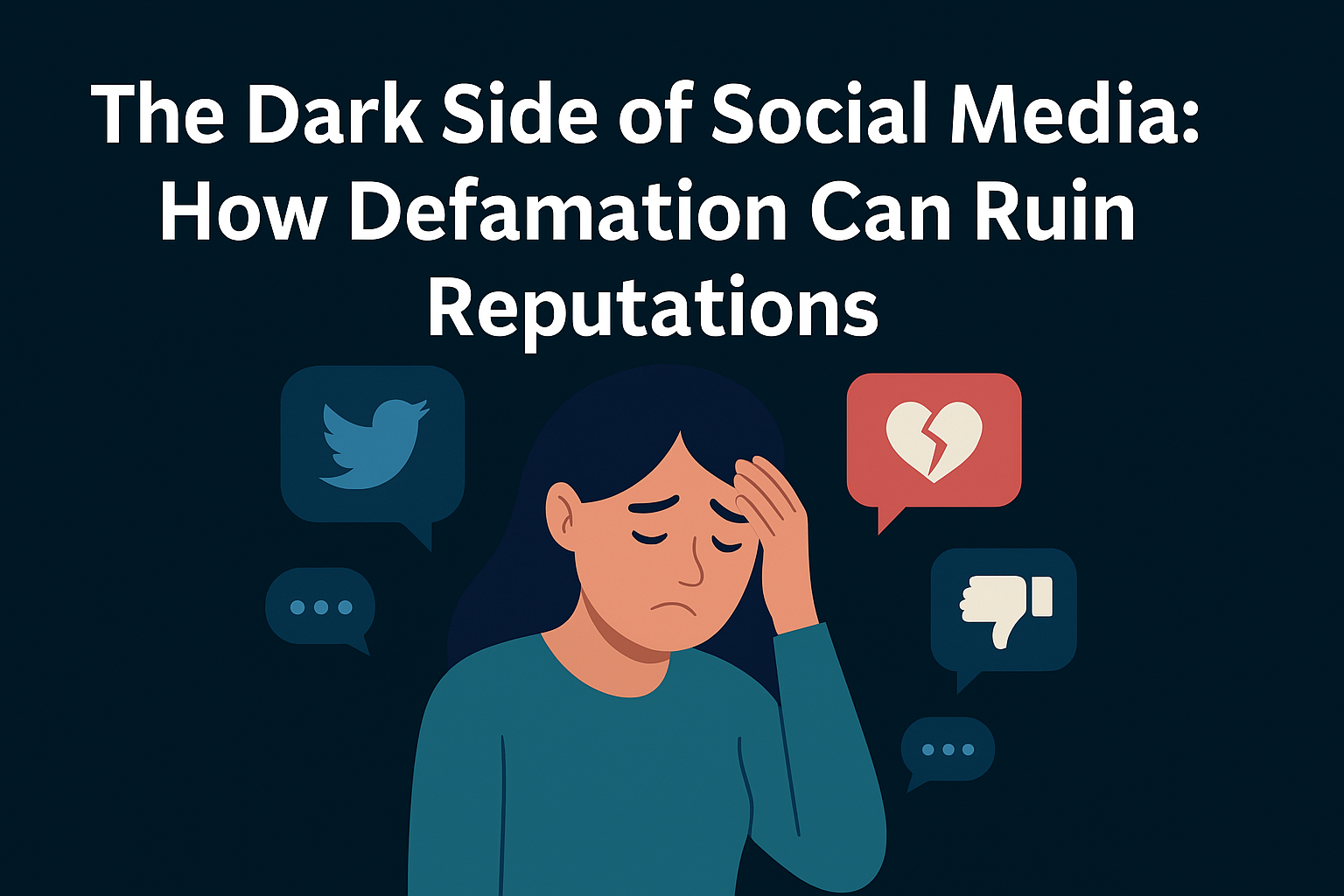Table Of Content
How Social Media Slander Happens
Social media slander is a form of defamation where harmful false statements are made publicly on platforms like Facebook, X (formerly Twitter), TikTok, or Instagram. Unlike private gossip, slander on social platforms is amplified by likes, shares, and reposts, spreading misinformation at a speed never seen before.
Common Examples of Online Slander:
- False accusations of infidelity, abuse, or criminal activity
- Claims of unethical behavior at work or school
- Fake reviews targeting individuals or businesses
- Posts containing doctored images or deepfakes
The viral nature of these platforms means a single misleading post can cause irreversible social media reputation harm within hours.
Real-Life Impact: The Damage from Online Defamation
Online slander has tangible, often life-changing consequences. Victims face emotional distress, job loss, family tension, and long-term public scrutiny.
Consider These Scenarios:
- A local teacher is falsely accused of misconduct on TikTok.
- Result: Placed on leave pending investigation, permanently stigmatized
- A small business is targeted with fake Yelp and Google reviews.
- Result: Search engine ranking plummets, leading to lost revenue and trust
- A college student is wrongly named in a viral Twitter thread.
- Result: Doxxing, hate mail, and suspension from classes
“False information shared online doesn’t disappear—it echoes.” — Legal Information Institute
The Psychology Behind Public Shaming
Public shaming on social platforms taps into mob mentality. The need to comment or share before verifying facts leads to widespread reputational harm. According to Harvard Law Review, online defamation creates a digital footprint that follows the victim for years, even after the post is deleted.
Legal Options for Victims of Social Media Slander
If you’re facing defamatory statements, the law is on your side—but you must act strategically.
Step-by-Step Actions:
- Document Everything
- Take screenshots, capture URLs, and record usernames.
- Use archiving tools like Wayback Machine.
- Report the Content to the Platform
- Use built-in reporting tools for harassment, defamation, or impersonation.
- Send a Cease and Desist Letter
- A formal request to stop defamatory content and avoid legal action.
- Contact a Defamation Attorney
- Legal counsel will determine if you qualify for a defamation lawsuit.
- Take Legal Action If Needed
- If the slander has caused measurable harm, you may sue for:
- Compensatory damages
- Emotional distress
- Punitive damages
- If the slander has caused measurable harm, you may sue for:
Expert Social Media Removal Solutions
At Defamation Defenders, we help victims recover from online attacks through Expert case analysis, Complete content removal and suppression strategies, Search engine reputation rebuilding, Social media takedown assistance, and So much more!
📩 Start Your Confidential Analysis Now to reclaim your reputation.
How to Reduce Social Media Reputation Harm
Proactive Measures:
- Use SEO tactics to promote positive content and push defamatory material down in search results.
- Respond calmly, if at all, to accusations.
- Avoid sharing the defamatory post, which can worsen exposure.
- Consult with reputation management experts.
If you found this article informative, you might like these posts from our blog:
FAQ: Social Media Defamation and Its Impact
Yes. If the false statement caused reputational or financial harm, you can pursue legal action.
Slander is spoken or verbally posted defamation (including video posts). Libel is written or text-based defamation.
Depending on damage severity, lawsuits can result in payouts from $5,000 to several million dollars.
Courts can subpoena social media platforms to reveal the user’s identity.
Generally no. Section 230 protects platforms—but not individual users—from liability.
More Social Media Reputation Management and Content Removal Resources:



